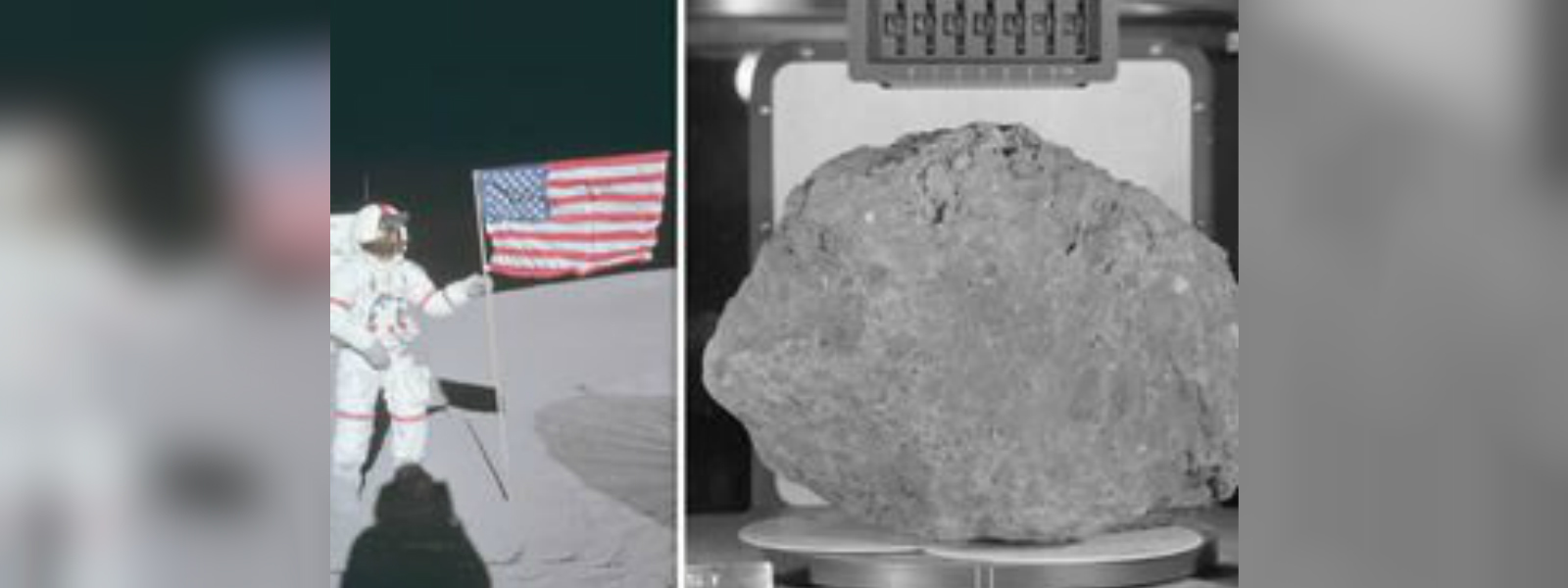.webp)

Apollo moon rocks shed new light on Earth's volcanoes
Reuters: Fifty years after humans first set foot on the moon, the rock samples collected by Apollo astronauts are being studied by volcanologists who believe they could help predict eruptions on Earth more accurately.
The basaltic fragments, similar to most of the Earth's volcanic rock, are the remains of the moon's volcanic past, with studies showing evidence of eruptions as recent as 1.5 billion to two billion years ago.
By examining samples from the moon, as well as Mars and the asteroid Vesta, scientists are comparing how rocks are formed under different gravitational conditions; specifically, how gravity affected the magma within rocky bodies billions of years ago.
"At the moment we are facing a disconnect in volcanology where we can monitor what's happening in a volcano in the present but it's very difficult to see the future because we have no reference to the past," Dr Matt Pankhurst, a volcanologist at the Canarian Volcanological Institute (INVOLCAN), told Reuters.
"We're looking at moon rocks because they have something very special in that they were formed in a lower gravity environment and that changes how the crystals and the melt behave with one another as they're forming. So studies like this give us a baseline to understand processes that happen at terrestrial gravity on Earth," he added.
For the study, NASA has loaned 18 lunar samples that are normally kept under lock and key at Johnson Space Center (JSC) in Houston, Texas.
Between 1969 and 1972 over 2,000 separate samples were collected by the six Apollo missions to land on the moon; amounting to 382 kilograms (842 pounds) of rocks, pebbles and dust from the lunar surface.
Ryan Zeigler, NASA's Apollo sample curator, said the samples used in the study were from the Apollo 12 and 15 missions; some of which came from a wide area of the lunar surface.
"Apollo 15 was the first mission where they had the rover so they were able to traverse a larger area. So they were able to visit a basaltic feature called a rille; basically an old collapsed lava tube. And so this is from a volcanic area, not unlike Hawaii," said Zeigler, while holding a fragment of moon rock encased in resin.
They were brought to the Diamond Light Source, Britain's national synchrotron, or cyclic particle accelerator, near Oxford.
Here electrons are accelerated to near-light speeds until they emit light 10 billion times brighter than the sun, then directed into laboratories in 'beamlines' which allow scientists to study minute specimens using x-ray beams in extreme detail without damaging them.
Pankhurst said it allows them to study "the individual histories of individual crystals" within the rocks.
"We're looking inside the sample and looking at in ways that we've never been able to see before," he said.
The team hopes the technique could help forecast volcanic eruptions on Earth, which can be triggered by the mixes of different types of magma beneath the planet's crust. Volcanologists are working on detecting and understanding the changes in the magma by examining volcanic rock samples.
Rocks formed on extraterrestrial bodies should give them a reference point to do the same thing with rocks from Earth.
"If you want to understand how the volcanoes on Earth are going to erupt and in what timescale they're going to erupt on, studying rocks from other planets will help you actually learn about that more," Zeigler said.
It could also aid our understanding of the lunar and planetary formation, he added.
"Understanding how volcanism works on other planets lets us understand how the whole solar system formed. So if we want to know how we went from a giant ball of dust to nine planets orbiting around the sun... this is how we're going to do it; studies like this, on rocks like this," Zeigler said.
Other Articles
Featured News





.png )
-789421_550x300.jpg)

-788581_550x300.jpg)
-788103_550x300.jpg)



-789357_550x300.jpg)



















.gif)